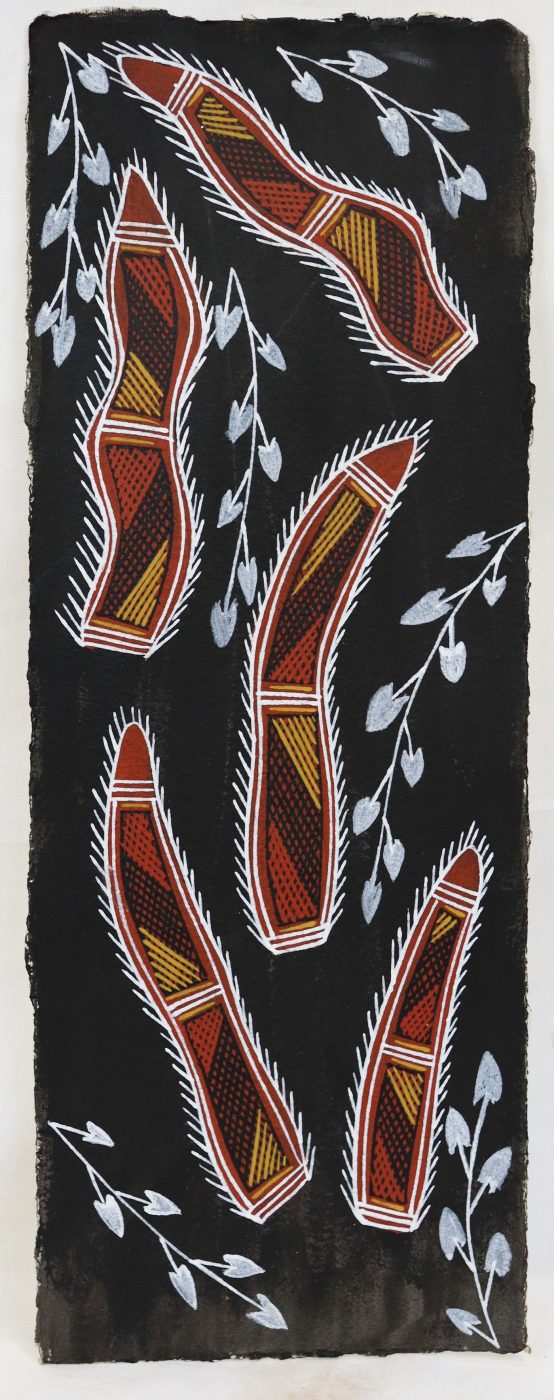Karrbarda (Long Yam)
$300
The karrbarda used to be a very important bush tucker. It grows in sandy soil and sometimes gets as big as half a meter long. The time to dig karrbarda is in yekke (early dry season) when the leaves are still green but the flowers and fruits are dry. Today we use a crow bar but the old people used a kunbarlkbu (digging stick). The best digging stick is made from mandubang (ironwood). When you dig up the karrbarda you put the narrow part at the top back in the ground to grow again. The old people used to go a favourite place for digging karrbarda and camp for a couple of nights.
Description
Language name: Karrbarda
Scientific name: Dioscorea transversa
Family: Dioscoreaceae
Common name: Long yam
Description: Herb with annual twining stems 2 – 4m long. Leaves heart shaped to broadtriangular, usually 5 – 12cm long, 2 – 8cm wide with a pointed tip, surface smooth, petiole 1 – 9cm long. Separate male and female plants. Male plants produce flower spikes 3 – 6cm long, female plants produce flowers 10 – 20cm long. Fruit is a capsule 20 – 30mm long with lobes 15mm wide; seeds are 5mm long with a surrounding wing. Tubers, cylindrical and rarely greater than 10mm diameter, often deep in the soil. Small globular bulbils present in some leaf axils.
Habitat: Moist open forest Distribution: Northern Territory, Queensland, Western Australia and New South Wales
